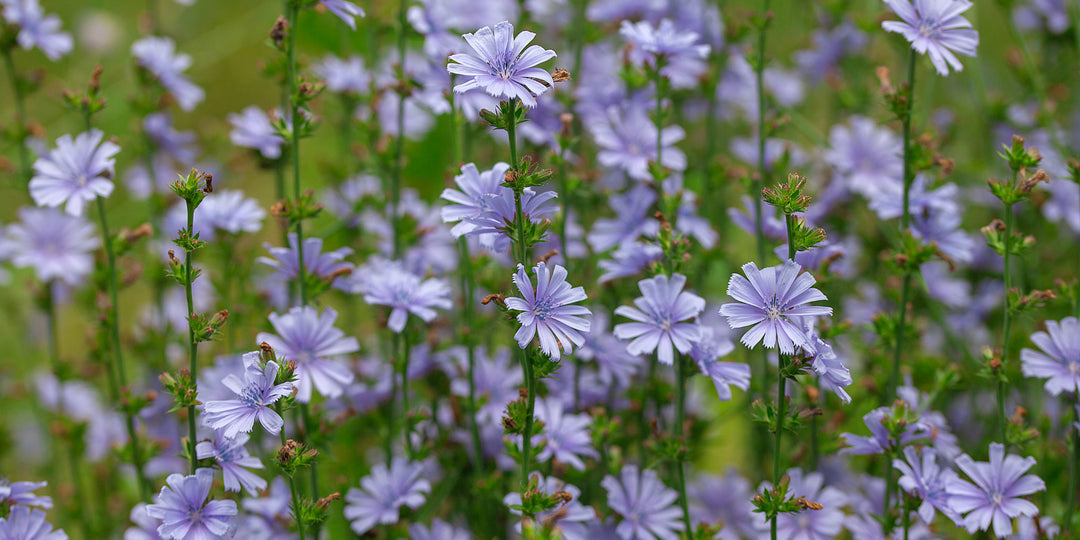Unlocking the Power of Roses: Rosewater
Rose water, you might see it in aromatherapy, perfumes, some makeup ingredients, lotions, and face masks.
It's a miracle liquid made from water and rose petals, or from rosehips. Once we run through the benefits, we'll provide you with a recipe so you can benefit at home (or, if we've already convinced you, you can find the recipe at the bottom of the page).

Potential Benefits of Rose Water
1. Help soothe skin irritation
Rosewater contains strong anti-inflammatory properties, which can treat internal and external ailments. It may even help soothe the irritation experienced from skin conditions such as eczema or rosacea (Thring, T.S., & Naughton, D.P. 2011).
2. Soothe sore throats
A sore throat is often battle with antibiotics that have been prescribed by a doctor, but if you're looking to avoid antibiotics then you may want to consider trying rose water, as it has traditionally been used to help soothe sore throats (Boskabady MH, et al. 2011).
3. Reduce skin redness
Having been used as a beauty product for thousands of years, it's no surprise that rosewater may have the ability to reduce skin redness as well as improve your complexion. It's antibacterial properties may even help to reduce acne (Boskabady MH, et al. 2011).
4. Contains antioxidants
Rose petals and rose oil contain many powerful antioxidants which may help protect your cells from damage. A study has even found that the antioxidants had potential effects of lipid per oxidation, providing powerful cell protection as a result (Boskabady MH, et al. 2011).
5. Prevent and treat infections
With power antiseptic properties, rose water has the portion to help prevent and treat infections, which is the exact reason that rose water is usually included in a wide variety of medicinal and natural treatments. For example, a study on the use of rose water in eye drops used to treat conjunctivitis found that the antiseptic and analgesic properties helped in its treatment (Abdul L, et al. 2010).
6. Sleep Aid
Spraying a few pumps of rose water on your pillow, bed, feet, or face, can help you sleep at night! The night time ritual may help reduce stress and anxiety by lowering cortisol levels and promoting the production of oxytocin (Kheirkhah M., et al. 2014). It can nudge the body and hormones in the directions of sleep, giving you the very real effects of beauty sleep, and breathing in rose water will enhance the lulling effect.
7. Maintaining Healthy Hair
If your hair is frizzy and fragile, if you have scalp conditions (like eczema or psoriasis), experience dandruff and oiliness, rose water can help you! It works to de-frizz, strengthen, has anti-inflammatory and antiseptic properties, and may remove dandruff and reduce oiliness. All you need to do is add several drops of rose water to your hair products or spray directly on problem areas providing hydration and shine.

How to Use Rose Water
1. Add it to your hair and skincare products. Combine with your already loved toners, cleaners, or conditioners (or any other product for that matter), and apply to clean skin or hair and continue with your routine a normal.
2. Use it as a make up remover by adding it to coconut oil.
3. Facial Mists that provide a pick me up to wake up and freshen your skin throughout the day. Combining it with apple cider vinegar may also help other skin irritations.
4. Adding it to your meals to provide vitamins and healthy minerals.
5. Smell fresh by spritzing it on linens or yourself, the calming floral smell will keep you and your space smelling fresh and induce relaxation.


How to Make Rose Water
Ingredients:
- Dried Foothills Naturals Rose Petals or Foothills Naturals Rosehips (organic and kosher!)
- Distilled water
- Large pot with a lid
- Heat-resistant bowl (glass or stainless steel)
- Cheesecloth or fine mesh strainer
- Airtight container or bottle for storage
Instructions:
- Measure the Dried Rose Petals or Rosehips:
- If you're using Foothills Naturals Rose Petals, you'll need about 1 cup of petals.
- If you're using Foothills Naturals Rosehips, you'll need about 1/2 cup to 1 cup of rosehips
- Place the Roses in the Pot: Put the Foothills Naturals Rose Petals or Foothills Naturals Rosehips in a large pot and cover them with enough distilled water to ensure they are fully submerged.
- Simmer: Put the pot on the stove over low to medium heat and bring the water to a gentle simmer. Do not let it boil, as boiling can cause some of the delicate rose fragrance to evaporate.
- Steam the Roses:
- Take the heat-resistant bowl and place it inside the pot (don't let it touch the water), on top of the rose and water mixture. The bowl should be large enough to cover the pot's opening, creating a makeshift lid.
- As the mixture simmers, the steam will rise and condense on the bowl's underside. The condensed steam is your rose water, let it condense and drip back into the pot.
- Allow the process to continue for at least 30 minutes. You can also continue until the rose petals or rosehips have lost most of their color and fragrance.
- Strain the Rose Water: Carefully remove the bowl from the pot and strain the rose water through a cheesecloth or fine mesh strainer into a clean bowl or container. This will help remove any impurities and bits of petals or rosehips.
- Cool and Store: Let the rose water cool completely before transferring it to an airtight container or bottle for storage. Store the rose water in the refrigerator, and it should last for a few weeks.
Your homemade rose water is now ready to be used! It's perfect as a facial toner, body mist, flavoring for desserts, or as a fragrant addition to bathwater. Enjoy the delicate aroma and natural benefits of this your homemade rose water!




